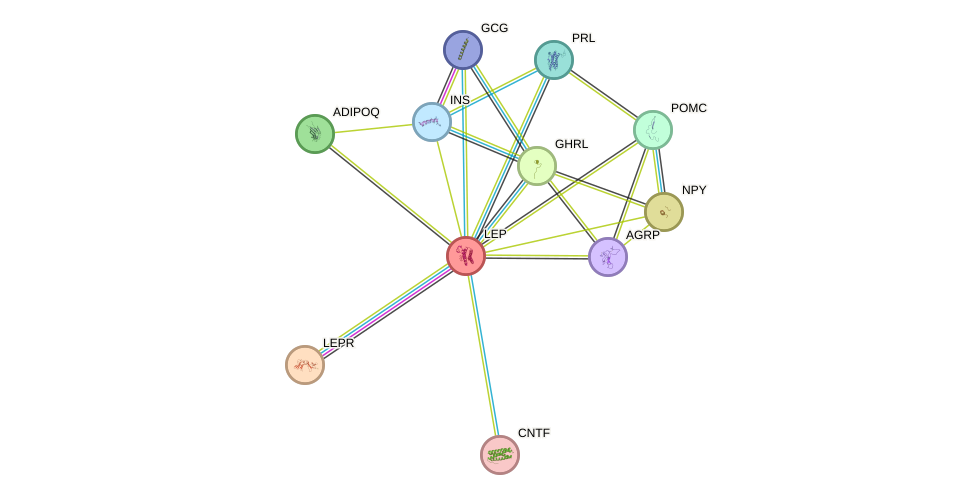GenAge entry for LEP (Homo sapiens)
Gene name (HAGRID: 217)
- HGNC symbol
- LEP
- Aliases
- OBS; OB
- Common name
- leptin
Potential relevance to the human ageing process
- Main reason for selection
- Entry selected based on indirect or inconclusive evidence linking the gene product to ageing in humans or in one or more model systems
- Description
LEP is secreted from adipose tissues and is involved in food intake and energy expenditure. Mice with mutations in the LEP gene are obese [1212]. Female mice injected with LEP grew slower but had an early onset of reproductive function [1565]. LEP deficiency in humans is associated with early-onset obesity [1741]. Due to its impact on energy metabolism and reproduction, LEP could be related to neuroendocrine systems involved in ageing as well as play a part in age-related diseases such as diabetes and atherosclerosis.
Cytogenetic information
- Cytogenetic band
- 7q31.3
- Location
- 128,241,278 bp to 128,257,629 bp
- Orientation
- Plus strand
Protein information
- Gene Ontology
-
Process: GO:0000122; negative regulation of transcription from RNA polymerase II promoter
GO:0001525; angiogenesis
GO:0001542; ovulation from ovarian follicle
GO:0001666; response to hypoxia
GO:0001890; placenta development
GO:0001936; regulation of endothelial cell proliferation
GO:0002021; response to dietary excess
GO:0003300; cardiac muscle hypertrophy
GO:0006006; glucose metabolic process
GO:0006111; regulation of gluconeogenesis
GO:0006112; energy reserve metabolic process
And 81 more GO terms Cellular component: GO:0005576; extracellular region
GO:0005615; extracellular space
GO:0005737; cytoplasm
Show all GO termsFunction: GO:0005179; hormone activity
GO:0008083; growth factor activity
GO:0051428; peptide hormone receptor binding
Protein interactions and network
Retrieve sequences for LEP
Homologs in model organisms
In other databases
- LongevityMap
- This gene is present as LEP

